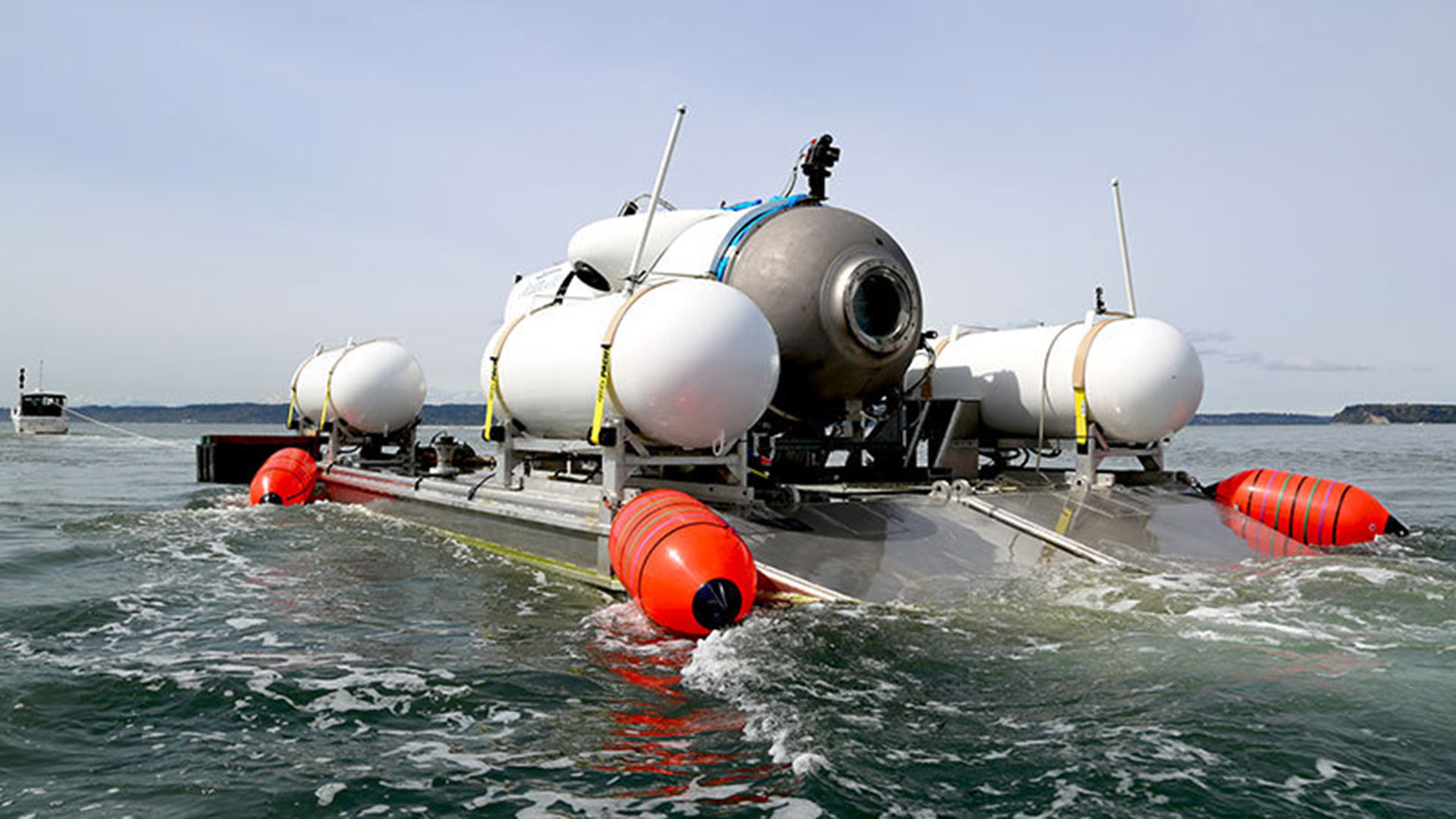

The U.S. Navy isn’t going to use its ship recovery system to lift the wreck of the Titan out of the Atlantic Ocean, the branch announced this week. The move comes after it was determined the submersible imploded and small debris was found.
The Navy previously deployed the Flyaway Deep Ocean Salvage System to the waters around where the Titan submersible dived on Sunday, June 18.
The system isn’t needed and deployment is “discontinued,” in part because there are no parts of the wreckage big enough to justify its use, a Navy official told the Associated Press on Sunday.
Subscribe to Task & Purpose Today. Get the latest military news and culture in your inbox daily.
Ships from the United States, Canada, France and other countries had been searching for days for the Titan, the small submersible that imploded while diving to the wreck of the Titanic in the Atlantic Ocean, killing the five people on board. The submersible was run by the company OceanGate Expeditions, which had ignored several warnings about the underwater vessel’s safety and construction. Four of the five passengers — the fifth was OceanGate CEO Stockton Rush — paid $250,000 for the journey.
The Flyaway Deep Ocean Salvage System is a ship lift system. It is capable of lifting “up to 60,000 pounds for the recovery of large, bulky, and heavy sunken objects such as aircraft or small vessels,” according to the Navy. The Navy deployed the FADOSS, sending it to Newfoundland, although it was not expected to reach the area before oxygen would run out, if the Titan was still intact and crew alive underwater.
The Navy actually detected the sound of a submersible implosion in the area the Titan was in on Sunday — as did ocean explorer and director of Titanic the movie James Cameron, apparently — but did not disclose this to the public until Thursday, June 22. Despite this, search and rescue efforts continued throughout the week until Thursday, when authorities said that the submersible likely imploded and all on board were killed during the initial dive.
“Efforts are focused on helping map the debris field in preparation for recovery efforts and to support investigative actions,” the Navy told the Associated Press today.
The remains of the 22-foot-long Titan was found approximately, 12,500 feet below sea level, and roughly 1,600 feet away from the wreckage of the Titanic itself. Despite the location being the last known position of the Titan before communications were lost, search and rescue vessels scanned a large swath of the ocean for days looking for the submersible.
With the submersible determined to have imploded, countries are now mapping the debris. The U.S. Coast Guard is leading the process, having also led the initial search, supported by the U.S. Navy. The Transportation Safety Board of Canada is investigating the incident and has met with crew aboard the Polar Prince, the ship that transported the Titan out to waters above the Titanic wreckage.
The latest on Task & Purpose
- Is Ukraine winning the war against Russia?
- Air Force sends F-22s to Middle East to deter aggressive Russian pilots
- Army secretary concerned ‘woke military’ criticism could hurt the service
- Fort Sill commander fired amid investigation
- Fort Polk is renamed Fort Johnson
